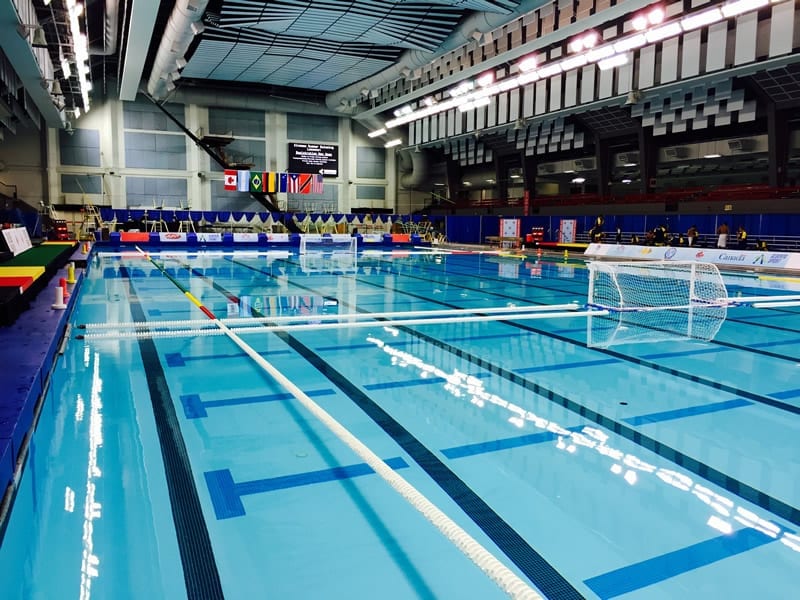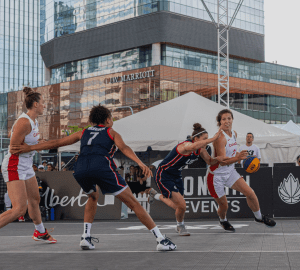Of the multitude of athletes that start out in a sport, only a few make it to the level of high performance training. This is recognized as the sport pyramid and with the availability of sport training facilities at a premium, it’s difficult to find a balance.
Most children start out in soccer in the neighborhood park, gymnastics in the school gym, skating at the local outdoor skating rink and swimming lessons at the local “Y” or small city pool. These are the fundamental building block sport skill programs that are the base for the sports these children will choose a few years later. There are tens of thousands of Edmonton children in these fundamental programs starting as young as preschool age.
When we look at the numbers of athletes in these sports programs, we see what appears to be proof that the sport pyramid model is true and only a small percentage of these athletes continue to compete at the high-performance local, provincial, national or international championship levels requiring sport training facilities. This evidence appears in sports like soccer and gymnastics were numbers diminish significantly by the teenage years. These statistics seem to prove that high performance athletes are so few that the sport model is a failing endeavor.
However the picture of a handful of base sport pyramids with a small number of high performance athletes at the top is incomplete. What actually happens is that as athletes leave the base programs they don’t quit but actually choose a different branch of the base program which results in not just a small number of high performance pyramids but a much larger number of secondary high performance pyramids.
For example, with the sprinting and agility learned in soccer, those who do not rise to the top of the soccer pyramid may go on to chose track and field, football, or baseball. Similarly other athletes will choose many other divisions and blends of the base sport programs on land, in the air, on ice and snow, or in the water.
Although there are only a small percentage of gymnasts at the high performance level by the late teens, there are thousands of former gymnasts who are divers, trampolinists, freestyle skiers, tennis players and athletes in other sports that require agility, balance, power, coordination and aerial awareness using high performance sport training facilities.
When these athletes started out, they were in one hour a week programs. A few years later they are training 10 hours or more per week in their high-performance training facilities. So when you tally up the athlete hours of training for high performance athletes, with the many high performance pyramid peaks, the high-performance athletes use our sport training facilities much more than the larger number of base level sport participants in, for example, swimming lessons once per week. The good news is that the larger high-performance facilities are equally good for training beginners as well as Olympians and there is more room for more swimming lessons and other activities.
Sport participation at the high-performance level is organized into clubs who, for the most part, raise enough revenue through training fees and fundraising to pay for the operating costs of the facilities they rent and could pay for the capital costs of their sport training facilities over the period of a normal mortgage.
Gymnastic clubs rent existing warehouses to avoid having to pay the capital costs of a training center upfront.
However there are some sports that use facilities, which are too expensive to build for a sport club. In particular, these are the ice sports and the aquatic sports. In the case of ice arenas if they are used fully all day long they can break even including both operating and capital costs.
If swimming lessons were giving during school hours there would be enough money to pay for the specialized high-performance facilities like 50 m Olympic size pools, which also can be used for lessons, and 10 m Olympic diving platforms. If the diving pool were equipped with a $1,000,000,10 meter Olympic platform that was rented 12 hours per day, a rental increase of $10 per hour would pay for the capital costs of this installation over 25 years. The initial investment of $1 million would only cost one dollar per Edmonton resident for proper sport training facilities.
Recent medical research has established that the 30% cancer death rate in Canada could be reduced by 80% to only 6% if Canadians followed a lifestyle where they ate nutritionally, exercised vigorously, kept a normal body mass index, minimized alcohol use and did not smoke.
“This is the lifestyle of an athlete.”
If we ensure that appropriate sport facilities are available for every sport at every level, including high-performance, we will be able to attract our children into a sport system, which will keep them in their sport for a lifetime. Keep in mind once the athlete graduates from the fundamental building block skill programs they are all high performance athletes.
There are no ‘unathletic’ deer, rabbits or human beings, so if you hear someone say: “my child is not athletic.” it is because they have been prevented from finding their sport for life at a young age. Let us not be part of this tragedy by leaving some sports without the facilities they need. “The tragedy is childhood obesity and early death.”
The annual cost of the scourge of cancer to the Edmonton community is $2.5 billion and 5000 cancer deaths. Just the single fact that no high performance athlete would take up smoking because of peer pressure from his or her teammates is enough of a healthcare cost saving to pay for the building and operating of all of our high-performance sport training facilities.
So the answer to the question is “Yes!”.
Herb Flewwelling – Canadian Olympic Coach








